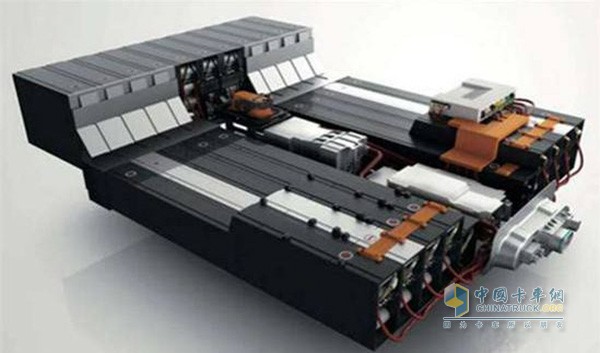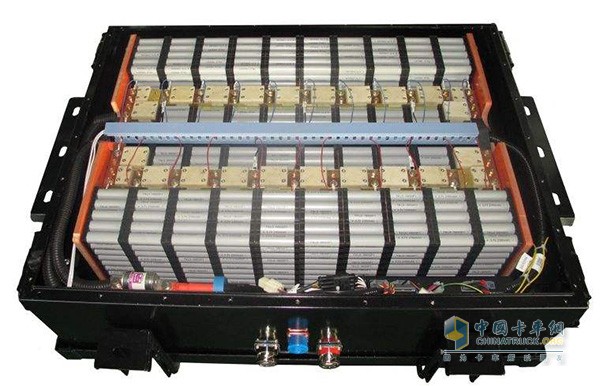From the perspective of the type of power battery, the installed capacity of ternary batteries has an absolute advantage, and the lithium iron phosphate battery has become the highlight. The installed capacity has increased significantly year-on-year, and the shipments have continued to grow. In fact, there has also been a voice in the industry before the subsidy accelerates to degrade or even cancel, the lithium iron phosphate battery will return to the local. The rise of the ternary battery is unstoppable, but in the new market situation, is lithium iron phosphate battery expected to pick up? Lithium iron phosphate battery has a counterattack According to the statistics of the Higher Industrial Research Institute, in January 2019, China's lithium iron phosphate battery installed capacity was about 1.4GWh, an increase of 174%; the ternary battery installed capacity was about 3.28GWh, an increase of 356%; lithium manganese oxide battery installed The electricity consumption was about 0.04GWh, down 36% year-on-year; the installed capacity of lithium titanate battery was about 0.05GWh, a year-on-year increase of 229%. "Early, we have made predictions that the installed capacity of lithium iron phosphate battery will pick up." Gao Pengran, deputy director of the R&D center of Shenzhen Xiongyu Power Technology Co., Ltd., said in an interview that the new energy vehicle subsidies the power battery. The requirements for energy density are very obvious, especially in the field of passenger vehicles, the company can obtain higher subsidies for supporting ternary batteries, and lithium iron phosphate batteries are subject to this. Nowadays, subsidies have accelerated the decline and brought new hope to the lithium iron phosphate battery market. Wang Wei (a pseudonym), an expert in the power battery industry, said that at present, the installed capacity of ternary batteries is the highest, and the growth of lithium iron phosphate installed capacity is not to be underestimated. "According to the first batch of "Recommended Models for the Promotion and Application of New Energy Vehicles" this year, domestic new energy companies have accelerated the application layout in the lithium iron phosphate market; in terms of special vehicles, the number of lithium iron phosphate batteries is dominant, which is also the response of car companies. In addition, 32 pure electric buses are equipped with lithium iron phosphate batteries.†He pointed out that new energy commercial vehicles equipped with lithium iron phosphate batteries are still the mainstream, and there is a “reverse†momentum in the passenger vehicle field. . In Gao Pengran's view, with the arrival of subsidies, the cost advantage of lithium iron phosphate batteries will be fully demonstrated. Electric special vehicle companies value the cost advantage and more choose lithium iron phosphate batteries. In addition, although the restriction on suspending the ternary battery commercial vehicle into the recommended model list for the promotion of new energy vehicles is no longer in place, it will take some time to completely open the situation, which makes the assembly of lithium iron phosphate battery accounted for a large proportion. Lithium iron phosphate battery has three "hands-on" Because of the high energy density, the ternary battery is deeply favored in the development of new energy vehicles. The "Technology Roadmap for Energy Saving and New Energy Vehicles" proposes that by 2020, the power battery capacity density should reach 350Wh/kg, and the system should reach 250Wh/kg. Previously, the four ministries and commissions jointly issued the "Notice on Adjusting and Improving the Financial Subsidy Policy for the Promotion and Application of New Energy Vehicles", and the pure electric passenger vehicles with a driving range of 100 ≤ R < 150 km will no longer enjoy subsidies in 2018; The subsidy of ≤R<250km decreased and was split into two subsidies, while the model with a driving range of more than 300km did not fall back. It is understood that the theoretical limit of the energy density of lithium iron phosphate battery is 170Wh/kg (but this value is constantly broken by enterprises), and the ternary battery is much higher than this value. Therefore, most battery companies almost always use ternary batteries as the key development direction. "The subsidy for subsidies for new energy vehicles is a foregone conclusion. The advantages of lithium iron phosphate batteries will be better reflected." Zhang Tao, an analyst at OFweek Industrial Research Institute, told reporters that "once subsidies are declining, lithium iron phosphate power batteries are three yuan. The battery will have a more price advantage, especially on the A0 and A00 passenger cars. This also explains why the installed capacity of lithium iron phosphate battery has increased significantly this year." Zhang Tao further analyzed that from the material point of view, the raw material cost of lithium iron phosphate battery is 70,000/ton, the cost of NCM523 battery is about 150,000/ton, and the NCM811 battery is about 200,000/ton. The cost advantage of the former is obvious. In addition, NCM811 battery production process requirements are higher, the accuracy requirements of the equipment is very strict, many manufacturers' production lines are newly invested, equipment depreciation and labor costs account for a large proportion. “Lithium iron phosphate battery can play an advantage in the A0 and A00 passenger cars.†Wang Wei believes that low-end passenger cars are more sensitive to battery cost, but the requirements for driving range are not too high. Lithium batteries can meet the requirements of this type of vehicle; on A00 passenger cars and low-speed electric vehicles, lithium iron phosphate batteries can largely replace lead-acid batteries, and they are also more advantageous in terms of cost and safety. For the lithium iron phosphate battery market, the Chinese Academy of Engineering academician Yang Yusheng analyzed the development of the technical route. He stressed that the extended-range hybrid car and the lithium iron phosphate battery are excellent match. The lithium iron phosphate battery is used in the extended-range electric vehicle market, which not only improves the safety of the vehicle, but also supports the marketization of the extended-range electric vehicle. Electric vehicles are concerned about mileage, safety, cost, and charging. “As new energy vehicles ushered in full marketization, the advantages of low cost, long life and high safety of lithium iron phosphate batteries will be revealed in some market segments, coupled with their dominant position in the commercial vehicle market and later. Lithium iron phosphate battery in the field of energy storage, its market space will be very broad." Wang Wei said. Lithium iron phosphate battery or will welcome the warm tide Some industry insiders believe that with the further decline of subsidies, the application trend of lithium iron phosphate will be restarted under the influence of multiple factors such as power battery performance, cost and market segment demand. Zhang Tao stressed that because of the guiding role of the new energy vehicle subsidy policy, the ternary battery has high energy density and long driving range, which is favored in the passenger vehicle field. Lithium iron phosphate battery is mainly used in the field of special vehicles and buses. The differentiation is very obvious. In the long run, subsidies will completely fall back in 2020, and enterprises will carefully calculate the economic accounts for cost and safety reasons. “I think that the assembly volume of lithium iron phosphate batteries in the passenger vehicle sector will pick up,†he said. In this regard, Gao Pengran agreed, he believes that lithium iron phosphate battery capacity will increase. “Because many companies have promoted ternary batteries in the past few years, some of the lithium iron phosphate battery production lines are in a stagnant state, but the capacity supply capacity is not a problem. With the increase in the assembly capacity of lithium iron phosphate, they can restart the production line at any time to welcome new ones. A round of warmth." "At present, it is difficult for us to predict what proportion of lithium iron phosphate and ternary batteries will be assembled in the future." Wang Wei said that lithium iron phosphate and ternary batteries should be applied according to different market and user needs. The use of the scene, the future development should be handed over to the market to choose. Press Forging may be defined as the process of shaping a metal that is placed between two dies by applying mechanical or hydraulic pressure. Press forging is usually done on a forge press - a machine that applies gradual pressure on the forging dies. The shape of the metal is usually accomplished by a single stroke of the press for each die station. Press Forging Press Forging,Die Forging,Press Forging Steel,Hot Forging Steel Jinan Paiwo Engineering Machinery Co.,Ltd , https://www.paiwoforging.com Lithium iron phosphate battery
Lithium iron phosphate battery  Ternary battery
Ternary battery
Subsidy demand for declining demand drives lithium iron phosphate battery or will welcome the warm tide
According to the new production and sales data released by China Association of Automobile Manufacturers, in January 2019, the production and sales of new energy vehicles in China were 91,000 and 96,000, respectively, an increase of 113% and 138% respectively over the same period of the previous year. According to the "Power Battery Field Database" of the Higher Industrial Research Institute (GGII), in January 2019, the total installed capacity of China's power battery was about 4.98GWh, a year-on-year increase of 281%, and it also ushered in a good start.